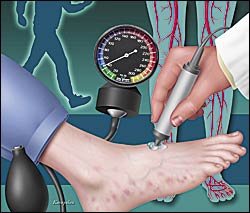
Am Fam Physician. 2004;69(3):461

In this issue, AFP announces a new system for labeling the strength of evidence supporting key recommendations in clinical review articles. The article on page549 introduces a taxonomy that will help family physicians sort through the evidence that drives their clinical practices. I purposely chose the word “sort” here, because it also emulates the new taxonomy, called SORT, for “Strength of Recommendation Taxonomy.” This labeling system was created through a collaborative effort of family physician editors, including the following authors of the SORT article: AFP's deputy editor for evidence-based medicine, Mark H. Ebell, M.D., M.S.; AFP's editor Jay Siwek, M.D.; Family Medicine's editor Barry D. Weiss, M.D.; BMJ-USA's previous editor Steven H. Woolf, M.D., M.P.H.; Journal of Family Practice's editor Jeffrey Susman, M.D.; Family Practice Inquiries Network's (FPIN) editor Bernard Ewigman, M.D., M.P.H.; and Journal of the American Board of Family Practice's editor Marjorie Bowman, M.D., M.P.A.
The SORT evidence-grading system will be adopted by several family medicine and primary care journals to allow readers to learn a single taxonomy that will apply to many sources of evidence. Beginning with the February 15 issue, AFP will start phasing in clinical review articles that use the SORT labeling system. Although the SORT system will replace the previous “level-of-evidence system” that AFP launched two and one-half years ago, some articles will still carry these labels while our authors and editors make the transition.
AFP is now calling for authors to adopt the new taxonomy in their clinical review articles, and revised guidelines for authors appear in this issue on page766. Our medical editors will work with authors to supply strength-of-recommendation labels for the key clinical recommendations in their articles. Articles with the SORT evidence-grading system also will provide a summary table listing the key clinical recommendations along with the strength of the recommendations and supporting references.
The SORT evidence-grading system builds on efforts AFP has made over the past several years to provide family physicians with the right informational tools. In an editorial on page483, Drs. Ebell and Siwek highlight new sources of patient-centered information in AFP. Recent additions include “Point-of-Care Guides,” which offer patient encounter tools based on the best available evidence (see page599); “Clinical Inquiries,” contributed by FPIN, which offer answers to family physicians' most common clinical questions based on the best available evidence (see page595); “STEPS,” short drug updates focusing on aspects of new drugs (Safety, Tolerability, Efficacy, Price, Simplicity); and “POEMs,” summaries of the medical research literature selected to present “Patient-Oriented Evidence that Matters,” addressing common or important clinical questions, measuring patient-oriented outcomes, and potentially changing physicians' practice (see page625).
According to Drs. Ebell and Siwek, family physicians are in the business of information management, and our goal is to make sure AFP remains the best place to meet all of our readers' information needs.